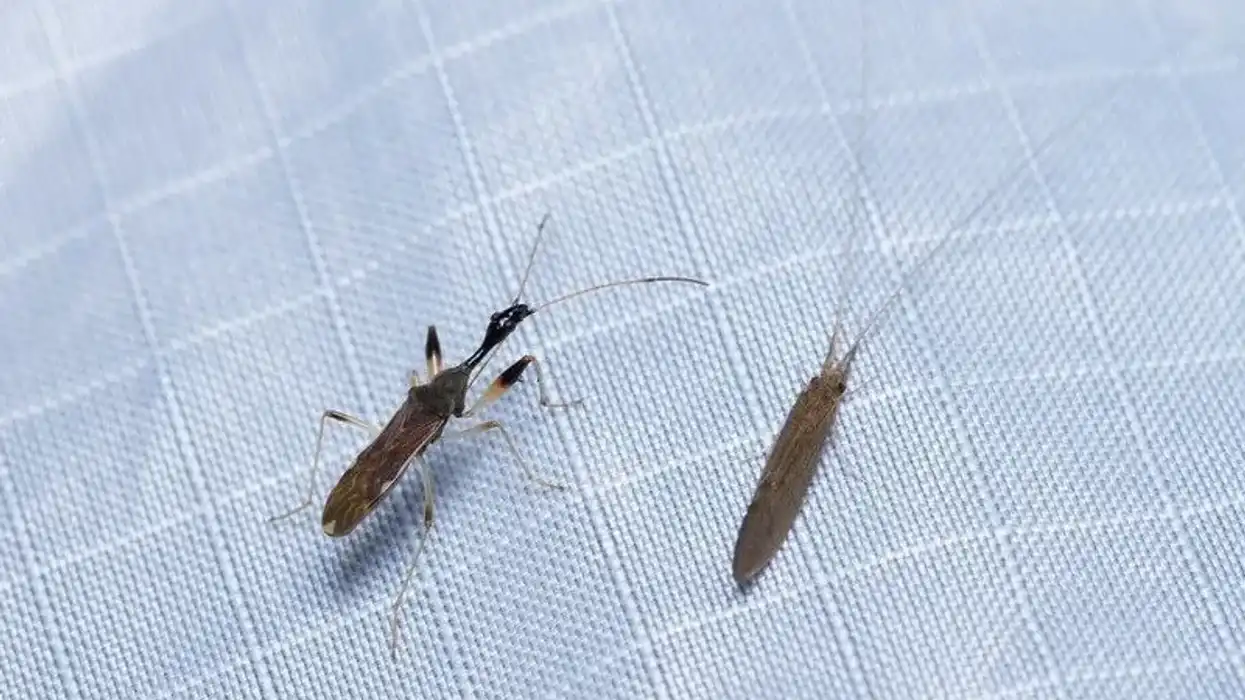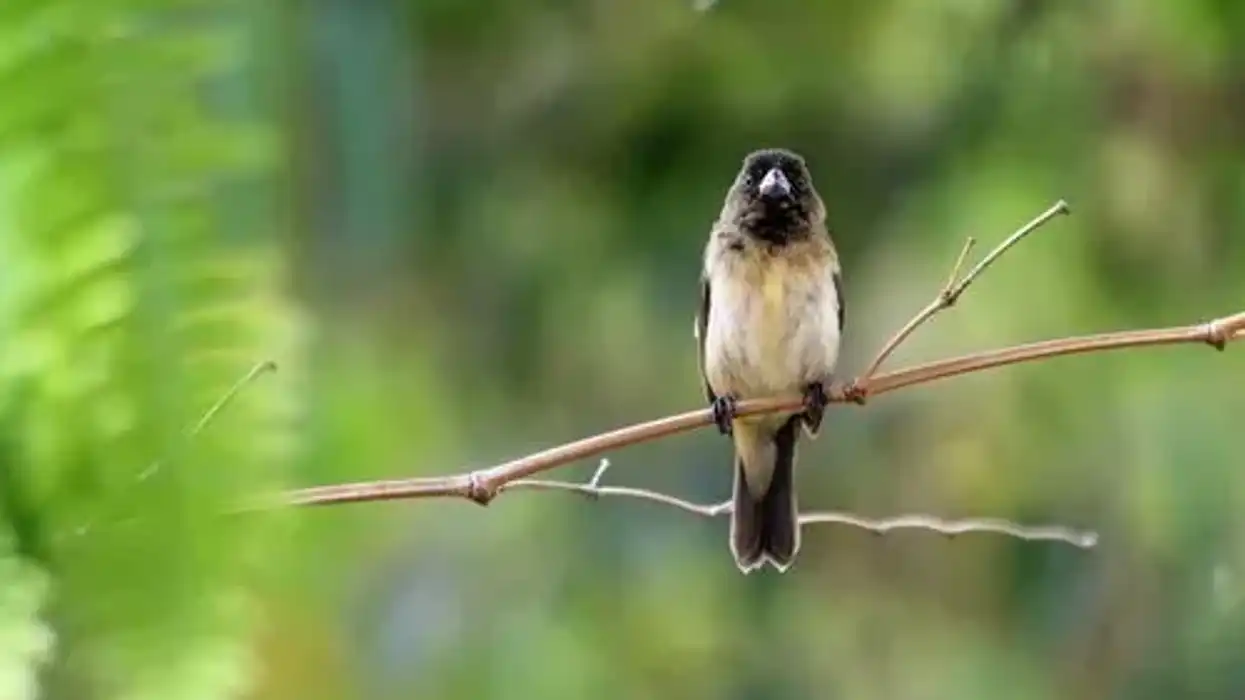The corn earworm, known by the scientific name Helicoverpa zea, is classified under the order Lepidoptera. They are mostly spotted in tropical and temperate regions. The migration from South to North America is very prominent. Corn earworms are small creatures of greenish-brownish color with dark stripes.
They mostly prey on fresh sweet corn, tomatoes, cotton, and other green plants. Thus, they are well known by the names sweet corn earworm moth, tomato fruitworm, and American cotton bollworm. The corn earworm life cycle, from laying eggs until becoming adult moths, lasts up to 30 days and is considered among the least in terms of survival.
The sweet corn ear zone is the main target because the corn silk plays an important role in their reproduction. The female moths can not reproduce at night, and only release pheromones during the daytime to attract the male corn earworm moth for reproduction. The tip is the main target for them to infect the crop.
The corn earworm caterpillars or corn earworm larvae are most aggressive in behavior and this causes massive destruction to crops. Many preventive and control measures are carried out, such as corn earworm pesticides and insecticides under chemical control, whereas organic control of corn earworms uses some natural ways to prevent them.
Learn about other insects by reading some fun facts about fleas and American dagger moths.
Corn Earworm Interesting Facts
What type of animal is a corn earworm?
The corn earworm (Helicoverpa zea) belongs to the genus Helicoverpa, which is prominently known as moths. They are under the order of Lepidoptera. The corn earworm larvae damage many crops and are, therefore, termed as the 'worst agricultural pest' or the 'calamity pest'. Earlier, they were categorized under the genus of Heliothis zea.
What class of animal does a corn earworm belong to?
The corn earworm's extension entomology belongs to the Insecta class, the Noctuidae family, and the Helicoverpa genus. Entomology has been changing for a long time, as they were previously known as Heliothis. Helicoverpa is a genus with many extensions, including Heliothis obsoleta.
How many corn earworms are there in the world?
The corn earworm information reveals that their population has not been precisely counted or estimated globally.
Where does a corn earworm live?
The corn earworm can be found all over the United States. They are most common in North America's tropical and temperate regions.
They typically migrate from south to north based on climatic conditions, as winters are difficult for them to survive. They were spotted in Virginia, Ohio, Kansas, and New Jersey. With the most recent distribution, they have been spotted all over the world, including in Eastern countries.
What is a corn earworm's habitat?
The corn earworm larvae are polyphagous and can be found on a variety of host plants, including sweet corn, tomatoes, and cotton. The habitat changes throughout the life cycle of a corn earworm, such as during the pupae stage, it lives underground in the soil.
It is unable to survive in the winter. As a result, it prefers hot and humid climates.
Who do corn earworms live with?
The adult female corn earworm lays 2500-3000 eggs, unlike the ghost moth which lays 600 eggs when kept in human conditions. The adult corn earworm lays 1000 eggs when kept in its natural environment.
They feed collectively on plants as young larvae, which is also considered to be the most destructive for crops, whereas they would need to live in a pair as adults to reproduce eggs.
How long does a corn earworm live?
The corn earworm can survive up to 30 days, whereas the young larva can survive up to 15 days when kept in optimal condition. They are unlike the Indian meal moth which survives up to 305 days.
How do they reproduce?
A pheromone is a chemical that is produced by insects, causing a change in the behavior of other animals of the same species. The same goes for the case of corn earworms.
The female moths fly during the daytime and produce scent-like sex pheromones after feeding on the ear of sweet corn to attract the male moth. The male moth gets attracted to the smell and lures the female moth with physical gestures.
An encounter with sweet corn is very important, specifically in the ear zone, for producing sex pheromones because they are only produced in the presence of corn silk. So, the availability of food is very important for reproduction in male and female moths.
What is their conservation status?
According to the most recent data, they can be found all over the world, particularly in North America migrating from South America. Their extinction level is unknown, and they are mostly seen during host crop seasons such as sweet corn season in tropical and temperate regions.
Corn Earworm Fun Facts
What do corn earworms look like?
The corn earworms change throughout their cycle. When the eggs are laid, they are light and white. In the larvae stage, they look like worms with soft hair on their body and build silk shells around them.
At this stage, their color varies from greenish to brownish. The head capsule is small and on the tip with a light peach to orange color. When they are adults, they take the form of a moth with furry skin of brownish color.
Adult moths have wide wings. Before taking the moth form, they are brown pupae. They have black lateral lines (dark stripes) and dark spots on their bodies.
How cute are they?
They are not at all cute. The adult moths appear to be more adorable than the larvae. If their behavior is observed, they are not cute but rather aggressive, causing widespread damage.
How do they communicate?
There is not much evidence about their communication. But they usually communicate through the scent of other corn earworms.
How big is a corn earworm?
They are smaller than the puss moth. The size of the egg is 0.01-0.021 in (0.025-0.53 cm) in a circular shape. When they grow into larvae, they measure up to 1.3-1.8 in (3.3-4.6 cm) As adults, they can grow up to 2 in (5.1 cm). The wingspan of corn earworm moths is 1.2 in (3 cm).
How fast can corn earworms fly?
The corn earworm moths are classified among the fastest flying insects with an airspeed of 17 mph (28 kph).
How much does a corn earworm weigh?
The weight of corn earworms is not recorded and is unknown. Generally, they are small in size and lightweight.
What are the male and female names of the species?
There are no specific names for their male and female species.
What would you call a baby corn earworm?
The baby corn earworm is the egg and they soon take the form of corn earworm larva after hatching 66-72 hours later.
What do they eat?
The plants such as sweet corn, tomatoes, and cotton are corn earworms' host plants. They feed on different plants such as sorghum, lettuce, eggplants, green peas, peppers, and sweet potatoes They feed on the ear zone of the crop or the tip of the fresh corn which is eaten by them.
The Corn earworm and the Polyphemus moth both are herbivores.
Are they dangerous?
They are agricultural pests causing damage to the crops. Their polyphagous feeding habit makes them more harmful to the crops and thus, this also leads to an increase in their survival rate. The highly affected area is North America and has to incorporate costly preventive measures to stop them from destroying crops.
Would they make a good pet?
The baby corn earworm larvae, when spending time weaving their silk shell using sweet corn silk thread at the ear zone, are useful but for the rest of their life span, they are more to cause damage. So, they would not make a good pet until the baby corn earworm rests in a silk shell.
The silk shell can help to make silk threads.
Did you know...
The female moth can reproduce five to seven times if they are infected with Helicoverpa zea nadivirus 2. The eggs are laid in a bunch that appears like white small beads.
They travel around 248.5 mi (400 km) with the flow of wind and are classified as a seasonal nocturnal migrant.
The larval stage is considered to be second in economic pest species control in North America.
How long does it take for a corn earworm to become a moth?
In the initial stage, when they are in egg form it's around 66-72 hours for them to hatch into a corn earworm larva. When they become larvae, they feed on crops and become corn earworm pupa for 12-16 days.
Adult moths or full-grown moths, can survive for a minimum of 12 days and a maximum of 16 days only when kept in optimal condition.
How to get rid of corn earworms?
As of now, we recognize the corn earworm as an agricultural pest that causes significant crop damage. Many corn earworm control and prevention measures have been implemented to drive them away or kill them.
Among other corn earworm traps, pheromone traps are the best corn earworm traps because they use scents to attract male corn earworm moths and then use chemical sprays on them. This procedure aids to capture 5-10 full-grown moths from the ears of fresh corn, allowing them to be further controlled.
Organic corn earworm control measures such as Bacillus thuringiensis and Nematodes can help save 80-90% of crops.
Many insecticides are used to control corn earworm larvae that enter the tip, or ear, of sweet corn or any other crop. If used at the appropriate time, this chemical control can reduce silk formation on crops by 10-15%.
Insecticide spray on plants must be repeated every three to four days on crop ears because once infected, the crop cannot be controlled.
Another way to control sweet corn earworms is the biological way in which natural enemies like insidious flower bugs and the endoparasitoid wasp feed on corn earworm eggs and limit their young ones from growing on green plants.
Here at Kidadl, we have carefully created lots of interesting family-friendly animal facts for everyone to discover! Learn more about some other arthropods such as luna moth fun facts and plume moth interesting facts pages.
You can even occupy yourself at home by coloring in one of our free printable corn earworm coloring pages.










